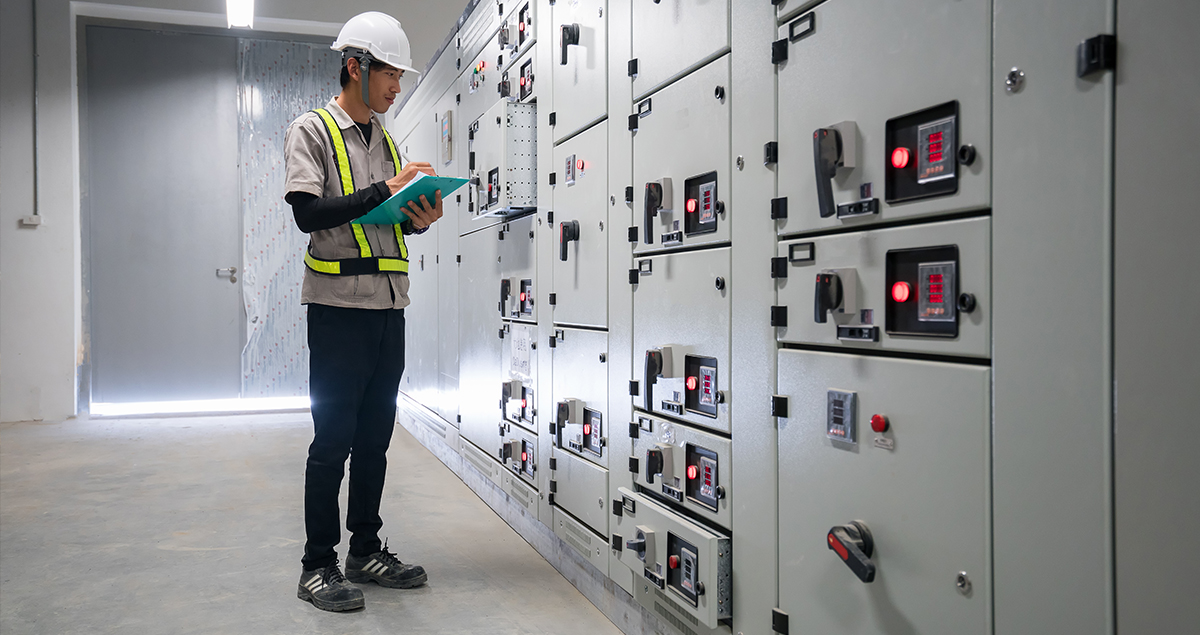How the internet of things and AI help keep the lights on

More and more of us are living in smart, connected homes. We use devices like Amazon’s Alexa to control our lights, Google’s Nest to learn and anticipate our heating preferences, and smart meters to give us real-time data about our energy usage.
But these Internet of Things technologies have an impact far beyond our homes, especially when it comes to energy.
Smart meters, for example, give a clearer picture of energy usage not only to consumers, but to grid operators too, taking the guesswork out of balancing supply and demand.
And this is just the tip of the iceberg when it comes to the digital infrastructure now helping the energy sector to be more efficient than ever before.
Smarter supply with AI
If you visit a modern power plant, you will find digital sensors attached to every piece of equipment.
These sensors generate vast amounts of data, which Artificial Intelligence is able to analyse and make sense of to increase efficiency - helping to generate more electricity from less fuel.
Not only this, but combining data and AI can create a power plant capable of operating itself.
And this is not just a futuristic vision. In Takasago, Japan, Mitsubishi Heavy Industries Group is in the process of building a ground-breaking new natural gas power plant capable of running autonomously.
The plant uses a digital platform developed by Mitsubishi Hitachi Power Systems, MHPS-Tomoni. This has the capability to mine data generated by sensors around the plant, and uses AI to take on tasks such as diagnosing failures before they happen, reducing supply when needed, or increasing power generation if demand spikes.
While the plant can be fully independent, the concept of Tomoni – which translates as ‘together with’ - emphasises the importance of AI and experienced engineers working together to make power plants operate as efficiently as possible.
Though the new Takasago facility is still under construction, operational plants are already using the system to improve their performance. One gas-fired power plant in Oklahoma, USA, using MHPS’s digital platform has set a global 60 hertz combined-cycle efficiency record of 62%.
In addition, ongoing surveillance of sensor data and AI-driven analytics can help plant operators detect potential problems early and take action. This surveillance can take place anywhere, via the cloud. MHPS has calculated that they can typically reduce downtime by three days per incident as a result.

Data driving down demand
While it is a significant step forwards, using AI to run power plants more efficiently only solves the supply side of the wider energy efficiency equation.
Reducing energy demand is also critical, and huge leaps forwards have been made over the past decade.
According to the International Energy Agency, global energy intensity – measured as the amount of primary energy demand needed to produce one unit of GDP – fell by 1.8% in 2016. Since 2010, intensity has declined at an average rate of 2.1% per year, which is a significant improvement from the average rate of 1.3% between 1970 and 2010. More than half of these gains have come through the improved HVAC systems and energy efficiency of buildings. This is thanks to everything from advanced building insulation, energy efficient lightbulbs through to devices like smart thermostats.
But industrial energy – the biggest and most intensive area of energy consumption - has so far only accounted for around a sixth of the total global investment in energy efficiency.
Despite these relatively low levels of spending compared to buildings and transport, the IEA says energy use per unit of economic output in the industrial sector fell by nearly 20% between 2000 and 2016.
The IEA says this trend is likely to continue thanks to the growing use of energy management systems, which provide a structure to monitor and control energy consumption and identify opportunities to improve efficiency.
These industrial-scale systems connect with IoT sensors and use AI to analyse the data that they generate and provide actionable insights.
Through data visualisations, factory owners can get a clear understanding of their energy use, and even identify which pieces of equipment are running inefficiently. Poor calibration or potential faults are among the triggers that signal a piece of equipment may need to be repaired.
Factory owners can also see the patterns in their energy usage that may help them identify the best times to operate certain functions, cutting costs and increasing efficiency.
In some countries, such as the US and UK, for example, major energy users can even use this knowledge to participate in so-called ‘demand side response programs’ in the local electricity markets. In these markets energy consumption can be traded as virtual generating capacity.
This effectively means they are paid not to operate during times of peak electricity demand. It also helps grid operators make sure there is always enough electricity to keep the lights on.





